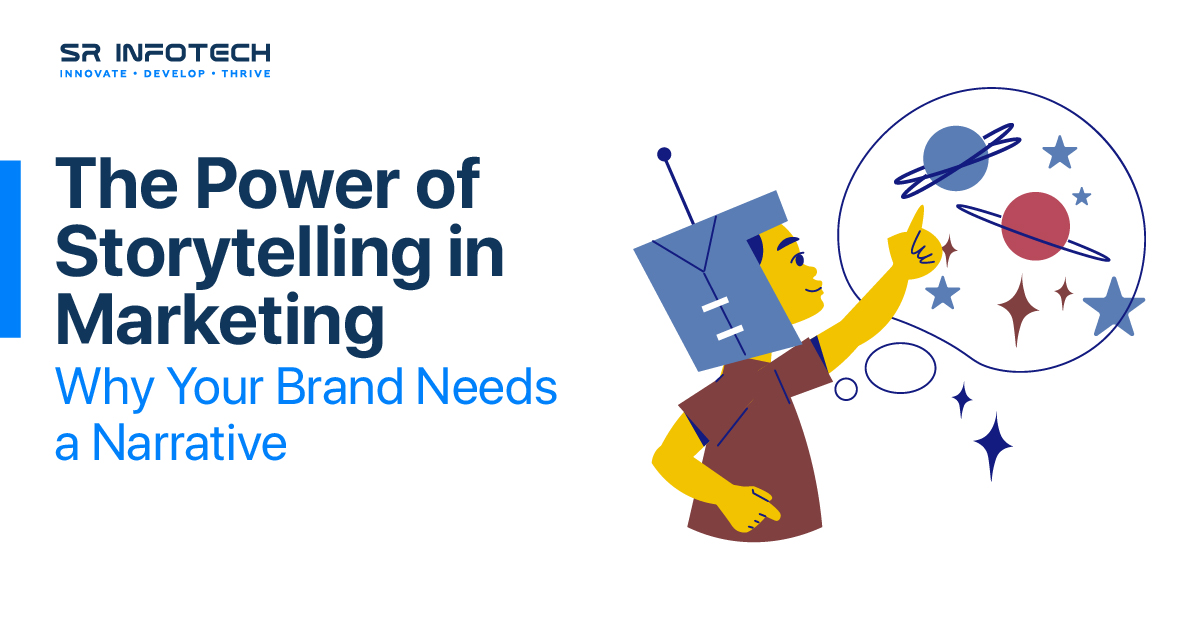Our Office
-
3rd Floor, House No.62, Kotthanur, B.D.A, Santrupthi Nagar, Arekere,
JP Nagar 7th Phase, Bengaluru Urban, Karnataka, 560078

In a world full of ads and promotions, how do you make your brand stand out? The answer lies in storytelling. People may forget the features of your product, but they will always remember how you made them feel. That’s the magic of a great story—it connects emotionally, builds trust, and inspires action.
Let’s explore how storytelling can revolutionize your marketing strategy and how you can use it to elevate your brand.
Stories are hardwired into our brains. From ancient myths to bedtime tales, they’ve been a way for humans to connect and share knowledge. In marketing, a compelling story helps your audience relate to your brand on a deeper level. For example, rather than just saying, “Our sneakers are durable,” tell the story of an athlete who achieved their personal best wearing them.
Studies show that people are 22 times more likely to remember a story than a fact. When you weave a narrative around your product or service, it sticks in your audience’s mind longer than a list of features ever could.
Storytelling adds authenticity to your brand. Sharing real stories—like customer testimonials or the challenges your business overcame—helps your audience see you as more than just a company. It shows you’re human, relatable, and worth their loyalty.
A well-told story doesn’t just inform; it motivates. Whether it’s buying a product, subscribing to a newsletter, or supporting a cause, stories can create emotional triggers that drive decisions.
Nike doesn’t just sell shoes; they sell dreams of greatness. Their campaigns often feature real-life athletes overcoming challenges, resonating with anyone striving to achieve their goals.
Dove shifted the narrative from traditional beauty standards to self-acceptance. By telling stories of real women, they built an emotional connection and inspired millions.
Airbnb shares stories of hosts and travelers to highlight the unique experiences their platform offers. This approach not only promotes their service but also fosters a sense of community.
Understand who your audience is and what matters to them. Are they parents looking for convenience? Young professionals seeking inspiration? Tailor your stories to their interests and pain points.
Storytelling isn’t limited to blogs or long-form content. Use videos, Instagram stories, customer testimonials, or even a series of tweets to narrate your brand’s story.
People can spot insincerity a mile away. Focus on real stories—whether it’s your founder’s journey, a behind-the-scenes look at your business, or genuine customer experiences.
A picture is worth a thousand words, and a video is worth even more. Use visuals to enhance your narrative and make it more engaging. Platforms like YouTube, Instagram, and TikTok are perfect for visual storytelling.
Encourage your customers to share their own stories involving your brand. User-generated content not only adds credibility but also creates a sense of community.
Storytelling isn’t just a trend; it’s a powerful tool that can transform your marketing strategy. By crafting narratives that resonate with your audience, you can build trust, loyalty, and a lasting impression.
Your brand has a story to tell—don’t keep it a secret. Share it, and watch your audience connect, engage, and grow.